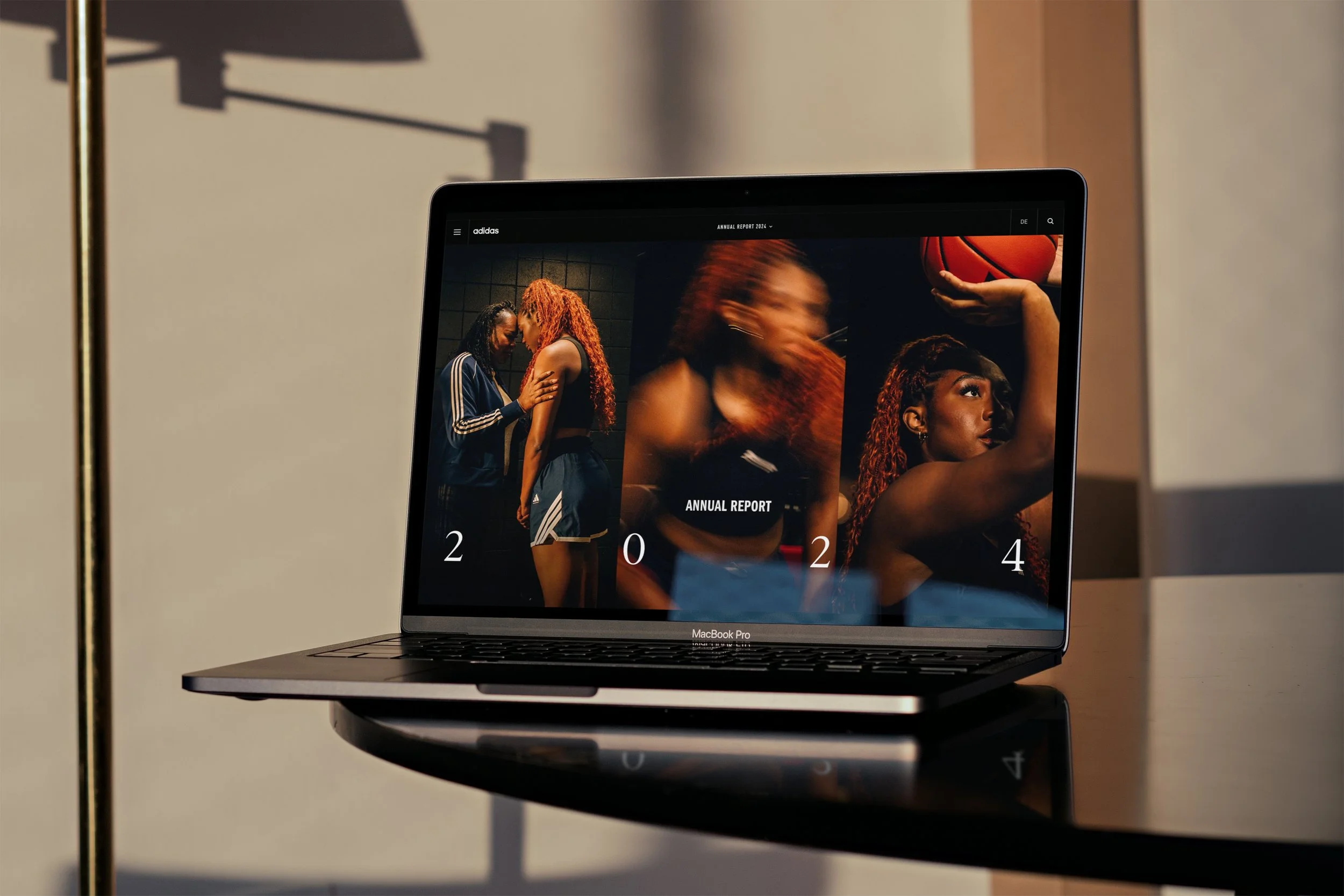The annual report - from obligation to positioning
The annual report is changing. What was once a comprehensive PDF document intended for auditors, authorities and investors has evolved into a strategic communication tool for the entire organization. A modern annual report should not only document results, but also tell the story of who the business is, what it stands for and how it creates value in a market that demands both transparency and credibility.
In this picture, we see a number of clear trends that are now shaping reporting. They are about form, format, content and strategic approach. Together, they form a new framework for what an annual report can, and should, be.
1. A visual shift towards authenticity
The visual language of the annual report is undergoing a cultural shift. Where previously abstract symbols of sustainability and social responsibility, such as melting glaciers, green leaves and graphic signals, were used, we are now seeing a trend towards more authentic and human stories.
This shift is driven by growing skepticism about glossy, symbolic representations of sustainability. A full 76 percent of consumers view “green labels” as marketing gimmicks, which means companies need to show more real work and real people . Images of employees, production, initiatives, and results help businesses appear more credible.
2. The board's work is visualized in new ways
An annual report today should do more than show who is on the board, it should explain why these particular people are there. We see this in reports from companies like GlobalConnect and Nike, where the board is presented in new, more informative ways.
GlobalConnect showcases the board in a clear, modern layout, while Nike goes even further, highlighting the expertise and experience of each member in relation to the company’s strategic goals. This gives the reader insight into how the board actually contributes to value creation, not just who they are.
Nike presents the board's expertise and roles in a way that demonstrates their contribution to the company's overall goals.
3. An editorial style makes the report more reader-friendly
The annual report increasingly borrows from magazines and editorial journalism. We see this clearly in H&M's reports, where large images, clear typographic hierarchies and flexible layouts create a more inspiring and engaging reading experience.
The editorial style makes heavy topics more accessible and allows space for stories, interviews and case studies that strengthen the narrative of the company's strategy and position. The result is a report that is not only read , but also experienced .
4. The short version — the report's new front door
Several leading companies now publish their annual reports in two versions: a full version and a shorter, curated version. We see this at Equinor, for example, where a condensed report highlights the most important findings, results and stories. The shortened version acts as a “front door” to the report, making it easier for different target groups to orient themselves before they delve deeper into the details.
This approach demonstrates an understanding of how content is consumed today. The short version provides context and direction, while the larger report serves as the regulatory and documentary foundation.
5. The PDF becomes heavier – and less reader-friendly
New legal requirements mean that the PDF part of the annual report is becoming increasingly comprehensive and legally-laden. Increased data requirements, greater technical precision and more auditing obligations mean that the document is growing in volume and complexity. This also results in a reduction in “softer” content, stories, context and explanations, because the text must be optimized for formal reporting.
The consequence is that important information often gets lost in a document that few people read in its entirety. In other words, the PDF is on its way to becoming a necessary archival document, but not the most effective communication medium.
6. Digital publishing becomes a necessity
As PDFs become heavier, storytelling must move to other channels, primarily digital. Adidas demonstrates this clearly through its online reports, where vivid visual content, video, interactive graphs, and flexible navigation structures make the narrative deeper and more engaging than a PDF ever could be.
Nike goes even further and actively uses the website for ongoing reporting throughout the year, where initiatives and results are packaged into strong, visual stories that build credibility and continuity. Digital publishing allows more target groups to access the content, on mobile, in articles, in social media and in internal channels.
Digital publishing makes the report an experience that the reader can explore, not just read.
7. The annual report evolves into a strategic campaign
One of the clearest trends is that the annual report no longer stands alone, but serves as the basis for a broader communication activation. When the report is based on a clear concept, the same storyline can extend through articles, social media, newsletters, press releases and internal platforms.
Instead of being a document published once a year, the report becomes a hub in a larger narrative about the company's social contribution, strategy and plans. This gives the report a new purpose, becoming a strategic communication boost, not just a retrospective duty.
The annual report goes from obligation to positioning
The developments we see internationally point in one clear direction: The annual report is becoming one of the company's most important branding and communication tools. It should still be precise and accountable, but it must also be interesting, accessible and credible.
Authentic images, editorial design, digital formats and clear story concepts give the report a completely new function. It becomes a way to own your own story, build trust in the market and make complex topics understandable to more people.
In a time when both demands and expectations are increasing, this is a development that is not only necessary, but strategically smart.
If you would like to hear more, get in touch for a chat!



